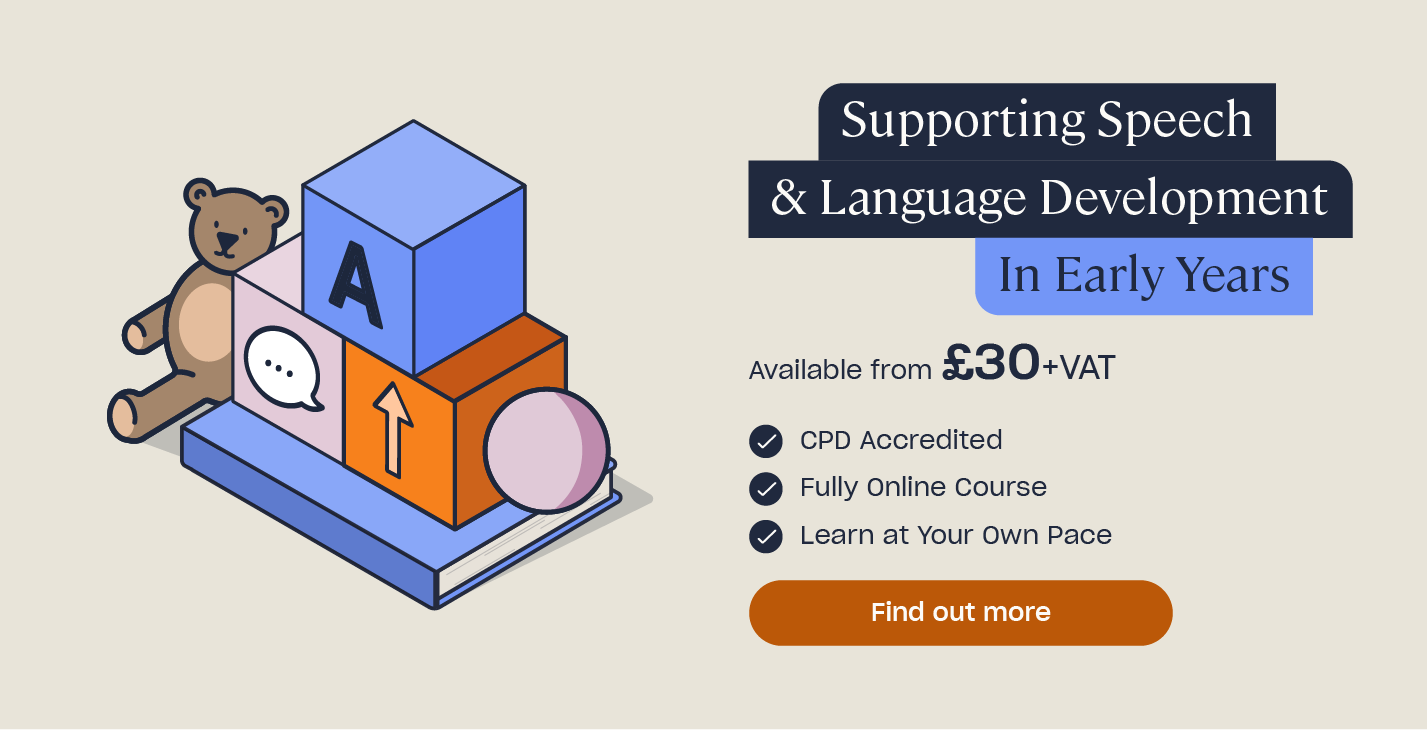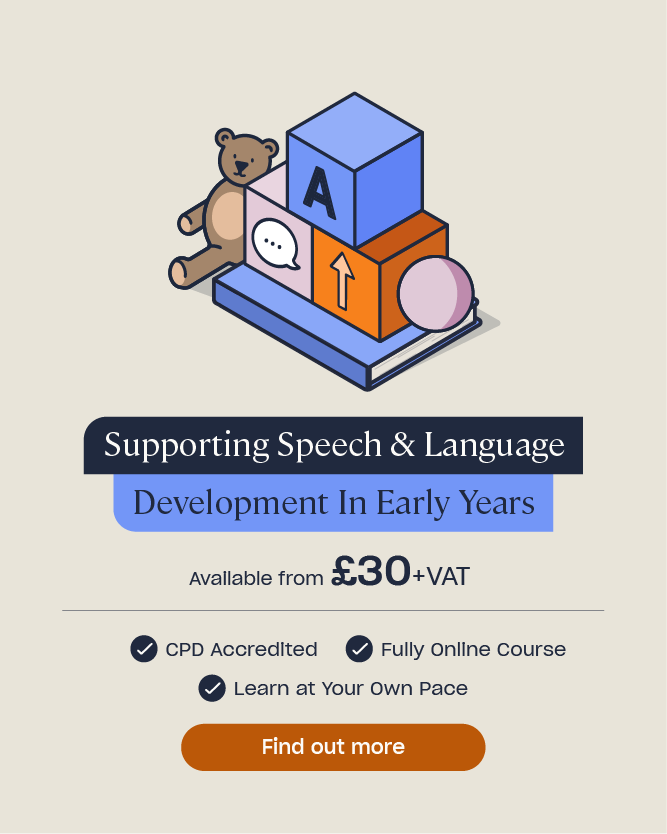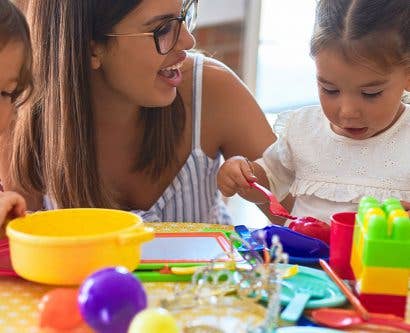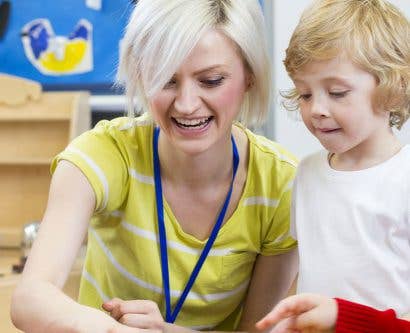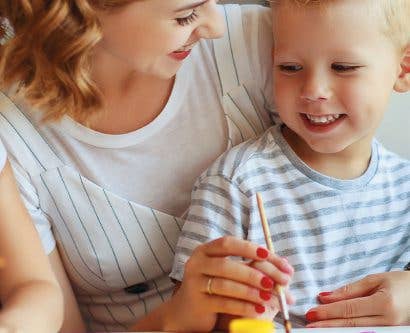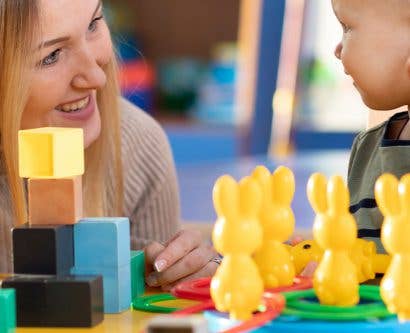Why is Child Development So Important in Early Years?
Children’s experiences in their first five years have been shown to have a significant impact on their developmental outcomes later on. As a result, it is important for parents and those who work with children to understand exactly what happens during these early stages of development. This allows them to meet a child’s needs effectively, and ensure that they have the best start in life.
However, research has shown that only 25% of parents recognise the importance of the first five years; additionally, teacher training does not adequately cover the early years, despite the fact that children are still within this period when they begin school. This lack of awareness on both parts could cause failures to provide the best environments for children, and their progress could be limited.
In order to help you understand the early years, this article will provide guidance on the stages of child development, milestones that children reach within each stage, and how to encourage development. We will also provide further research to show you why this period of life is arguably the most important.
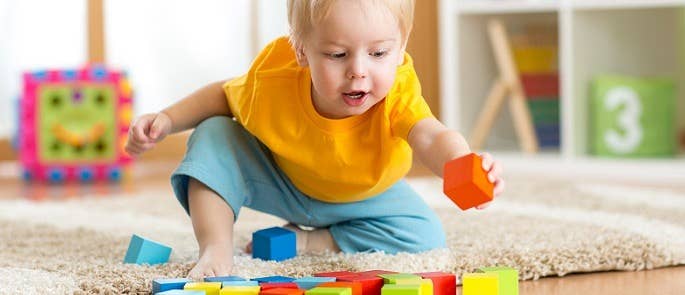
Want to learn more?
Our course on Supporting Speech and Language Development in Early Years explains what typical development in this area looks like, discussing a range of support strategies approved by speech and language therapists, and going into detail about speech, language, and communication needs – including what causes them, warning signs, and how to help children who you know or suspect might have them. Have a look at our course library to see this and other courses that we offer.
What are the 5 Stages of Child Development?
Development describes the way a child grows, changes, and develops skills – not only physically, but also socially, emotionally, cognitively and communicatively.
Child development can be broken down into five stages:
- Newborn (0-3 months)
- Infant (3-12 months)
- Toddler (1-3 years)
- Preschool age (3-4 years)
- School age (4-5 years).
At each of these stages, children reach different milestones (also known as ‘characteristics of a stage’. In the next section, we will describe what these milestones are, giving you a general idea of the rate at which children progress.
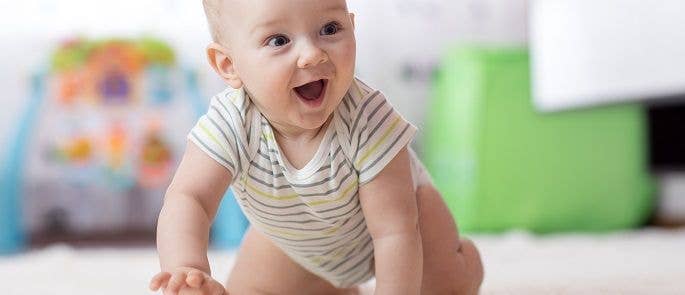
What are the Characteristics of Child Development Stages?
At each stage of development, children gain skills in four main domains. These domains are:
- The communication and speech domain. Children have to learn to communicate with everyone around them. As well as learning the language, they learn about taking turns in conversation, and how to categorise the world around them. This can be extremely difficult, and leads to interesting errors; for example, when a child learns that a round object is a ‘ball’, they have to work out if that means everything round is also called a ball. Is the moon a ball, and why not? It takes time to understand what separates one word from another.
- The physical domain. The body increases in skill and performance over time, going through gross motor development (learning to use large muscles, such as the arms and legs), and fine motor development (learning to use muscles to make precise movements, such as the hands and fingers).
- The social and emotional domain. Children’s identities, self-images and perceptions of feelings evolve as they grow. They also develop relationships with others, and learn how to socialise and follow social etiquette.
- The cognitive domain. ‘Cognitive processes’ are higher-level functions of the brain, including thinking, knowing, remembering, judging, and problem-solving. As they develop, children increase their understanding of the world, improve their memory, gain better concentration, and refine their problem-solving skills.
All of these areas of development interlink at every stage – children can’t progress in one area without progressing in another.
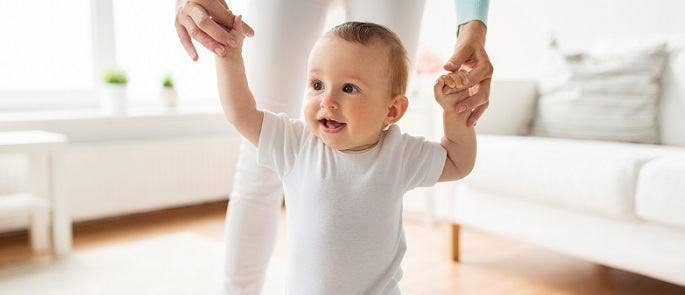
Progressing Through the Milestones
The milestones that are met across domains in each stage have been determined by a large amount of research. They are intended to help parents and those who work with children to understand what to expect, so that they can identify any delays or problems and provide adequate support accordingly.
However, it is important to note that the stages of development are best thought of as a general guide. Development does tend to happen in the same order for every child (for example, you need to learn to stand before you learn to walk), but the timeframe is flexible. Differences between children are usually nothing to worry about; like in other stages of life, everyone is different. Development depends on many factors, such as the child’s environment, health, genetics, and family background (including how supportive their family is).
If you are concerned about a child’s progress, keep notes about the time periods of milestones that they have reached, and speak to your GP or health visitor. Identifying delays early on can be extremely helpful.
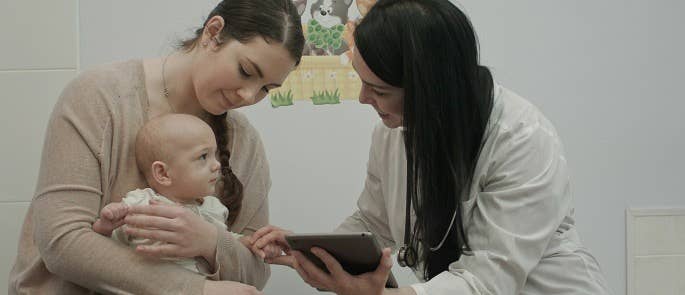
The milestones for each stage of development in the first five years are as follows:
Newborn (0-3 Months)
| Domain of Development | Milestones or Characteristics of the Stage |
| Communication and Speech | • Coos • Makes eye contact • Cries for different needs • Listens to your voice |
| Physical | • Increasing amount of control over arms, legs, hands, and head • Turns towards sounds • Follows objects with eyes |
| Social and Emotional | • Starts to smile between 2-3 months |
| Cognitive | • Shows interest in human faces and objects |
Infant (3-12 Months)
| Domain of Development | Milestones or Characteristics of the Stage |
| Communication and Speech | From 3 months: • Babbles (e.g. da, da, da) with increasing variety of sounds • Listens when spoken to and might respond with babbling – learning about conversations • Reacts to noises (especially sudden ones) From 7-9 months: • Recognises sound of own name • Follows some commands when used with gestures • Looks at objects or people when you name them From 9-12 months: • Knows what ‘no’ means • May communicate with gestures and point • Might use protowords (made-up words with a consistent meaning, e.g. ‘yumyum’ for food). At this point, they are close to saying their first word |
| Physical | From 3 months: • Greater control over arms and legs • Able to sit upright • Can turn over or roll over • Explores the world, e.g. banging objects and putting things in mouth From 7-9 months: • Can grasp objects with one hand • Starts to crawl • Some children may stand From 9-12 months: • Improved hand-eye coordination • May be able to walk when holding onto furniture • May be able to stand briefly without support |
| Social and Emotional | From 3 months: • Laughs when happy and cries when annoyed or frustrated • Starts to recognise familiar faces • Forms attachment to favourite toy • Might begin to be shy in front of strangers • Responds to facial expressions and different tones of voice From 9-12 months: • Shows distress when someone else is upset • May become more clingy and anxious in the company of others • Enjoys being with other babies but does not yet play with them • Can give hugs and loves receiving them |
| Cognitive | From 3 months: • Notices music From 7 months: • Enjoys dropping things and watching them fall (cause and effect) From 9-12 months: • Arranges objects into patterns and shapes • Concentration can last for up to 1 minute • Tries new things • Adapts learnt strategies to new situations e.g. a puzzle • Looks for hidden objects in the right place |
Toddler (1-3 Years)
| Domain of Development | Milestones or Characteristics of the Stage |
| Communication and Speech | From 1 year: • Says first word • May build up to using 5-10 different words by 18 months • Starts to recognise that different accents are the same language (although this can take much longer) • Responds to questions From 18 months: • Uses at least 50 words • Names objects and pictures • Begins to use two-word phrases (e.g. ‘me book’). Speech is telegraphic (says main words but misses out connecting words) • Uses simple pronouns (‘me’, ‘you’, ‘my’) • Can follow two-step directions (e.g. ‘pick up your coat and bring it to me’) • Enjoys listening to stories • Talks to self during play From 2-3 years: • Starts to say first correct full sentences – grammar starts to appear with three-word combinations • Talks about what they’re doing as they do it • Conversation skills improve – they respond to you more often |
| Physical | From 1 year: • Has a preferred hand • Makes marks on paper • May be able to stand and walk a few steps alone • Sits up easily • Crawls fast From 1-2 years: • More confident moving around • Walking improves • Can use a spoon to feed self • Can stack blocks on top of each other • May drink from a cup From 2-3 years: • Can mostly dress/undress self, given enough time • Can use toilet alone • Can throw and kick a ball • Improved running • Avoids obstacles • Jumps and hops • Keen to climb • Can ride a tricycle with stabilisers |
| Social and Emotional | From 1 year: • Able to recognise self in mirror • Starts to develop object permanence (the understanding that an object still exists, even if it can’t be seen or heard) From 2-3 years: • Emotions are easily visible • Wants to do things when they want to • Rollercoaster of feelings – trying to work out who they are. May have tantrums • Plays alongside other children, but not together yet • More confident with strangers • Some understanding that others have feelings |
| Cognitive | From 1 year: • Can point to named body parts • Can identify familiar things in picture books • Much better at solving puzzles From 2-3 years: • Can name colours • Recognises some letters • Can say numbers or count aloud (not necessarily in the right order) • Can group similar objects together • Increased logic: has some understanding of reality and make-believe; knows about cause and effect (e.g. touching a hot oven will burn them) • Copies others increasingly • Knows own name and that they are a different person to someone else • By 3 years old, has fully developed object permanence – this decreases any feelings of separation anxiety |
Preschool Age (3-4 Years)
| Domain of Development | Milestones or Characteristics of the Stage |
| Communication and Speech | From 3 years: • Masters difficult sounds, like the following: judge, watch, and thing • Speaks more clearly – strangers can understand them • Asks lots of questions (e.g. ‘what?’, ‘why?’, ‘how?’ • Still makes errors with tenses |
| Physical | From 3 years: • Can use a tricycle and other wheeled toys • Can use a toothbrush and scissors • Scribbles start to look more like letters • Walks up and down stairs unsupported • Can catch a ball from a short distance away • Can draw a circle and a square • Can use a fork and a spoon |
| Social and Emotional | From 3 years: • More at ease with others • Begins to participate in games in small groups • Shows imagination • Sees self as having a body and mind with feelings • Talks about feelings • Cooperates with other children • Role-plays (e.g. as mummy and daddy) • Knows when they have done something wrong |
| Cognitive | From 3 years: • Memory is much better – knows if you sing a song or tell a story incorrectly • Can concentrate for up to 3 minutes • Looks through a book alone • Knows numbers 1-10, but not necessarily in order • Knows full name and gender |
School Age (4-5 Years)
| Domain of Development | Milestones or Characteristics of the Stage |
| Communication and Speech | From 4 years: • Uses more complex sentences (e.g. two clauses with ‘and’ in the middle – ‘you will be the prince and I will be the princess’ – or subordinate clauses – ‘they go to sleep when it’s bedtime’) From 5 years: • May be able to tell stories that stay on track • Can answer simple questions about stories • Recites nursery rhymes and sings songs |
| Physical | From 4 years: • Can dress, eat and wash mostly independently • Holds pencil properly • Can brush hair • Can walk along a straight line on the ground • Draws more complex ‘people’ |
| Social and Emotional | From 4 years: • Likes to initiate conversations with others • Makes friends • Has fewer arguments with other children • Talks about likes and dislikes • Uses lots of props in imaginative play • Can take turns and share • Shows anger through words and actions • Comprehends danger • May be bossy or show jealousy • Is proud of their achievements • Responds to reasoning • Enjoys independence but still needs comfort and reassurance • Is concerned about being disliked |
| Cognitive | From 4 years: • Knows what is right and wrong • Knows what it is to tell a lie • Still has some difficulty separating reality and pretend play • Basic grasp of numbers, colours, size and time • Interest in life and death – deeper questions • Understands routines • Understands comparisons like ‘bigger’, ‘faster’ • Can say name and address • Understands words like ‘in front of’, ‘behind’, ‘next to’ |
Why is Early Child Development Important?
The reason that early child development is so critical is that it lays down the foundations for the rest of children’s lives. The brain is at its most receptive during the first five years, which leads to early experiences having a huge impact on the development of neurological connections. This influences children’s brain functioning throughout their lives.
More specifically, early child development has a direct impact on children’s behaviour, social skills, emotional boundaries, ability to form close relationships, school readiness and level of achievement, even into adulthood.
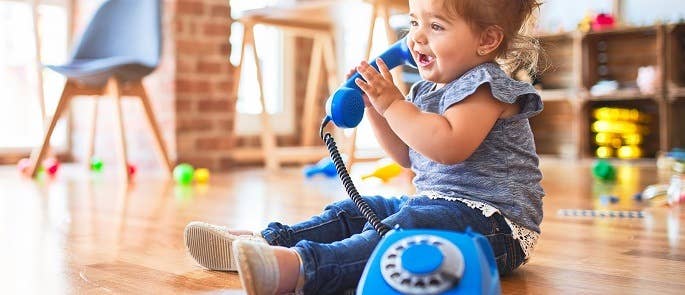
As a result, it is important for parents and those who work with children to support and encourage development in all domains. All children learn more if the adults around them make a purposeful effort to help them. Think of cognitive development, for example; children can only learn the names of different colours or animals if they have been told them. In terms of communication, they can only learn new words if they are talked to frequently – there is a direct link between the rate a child’s vocabulary develops at and the amount the mother talked to the child in the first year (Bee, 1984). Positive behaviour also needs to be promoted in the early years to ensure that they understand what is expected of them in society.
Consequences of Unmet Developmental Needs
If children’s developmental needs are not met, this can impact them in the form of future mental health problems and deep-rooted issues. Studies have shown that children who were not provided with enough mental stimulation are prone to behavioural issues, low self-esteem, poor attention and insecurities which can last well beyond childhood.
A common developmental issue that has become evident is that children are failing to acquire language and social skills in the way that they normally would. Technology, such as computers and handheld devices, has caused this.
Many parents believe that playing ‘educational’ games or watching ‘educational’ TV for hours every day helps to develop children’s communication and cognitive skills. However, this is not the case; research has shown that interaction with their parents and other humans in the first five years is far more educational, and is vital for children’s development. Time spent using electronic devices takes away from time spent having real interactions, causing a negative impact on children’s development.

In the next section, we will provide you with some facts and tips on how to aid children’s development at each stage within the first five years. This will help you to ensure that you are doing the best for the children you care for.
How to Encourage Child Development in Early Years
At each different stage of development, there are things that you can do to help.
At the Newborn Stage (0-3 Months)
Provide enough stimulation for the baby
This includes talking to them, reading them books with pictures, making eye contact, playing with them (e.g. tickling) and showing them toys (brightly coloured, black and white, red and white, or those that make a noise are best). Stimulation helps babies to engage mentally and develop their senses.
Help to strengthen their muscles
You can do this by giving them a gentle baby massage, or putting them on their stomach for a short period of time (strengthening their neck and back). Always make sure they are awake and you are close by when you do this. Babies also need time to lie on their backs with their arms and legs free to kick and wave around – this builds up further strength.
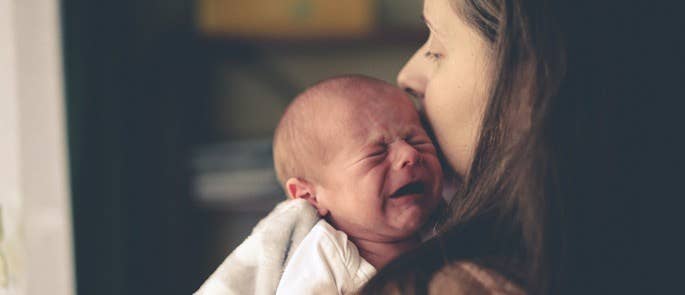
Respond straight away when they cry
This builds a strong bond between you and them, which aids their social/emotional development and stops them from becoming too distressed or taking in too much air.
Support bonding and attachment
You can do this by having skin-to-skin contact, talking to them often, feeding and bathing them, playing with them, and making eye contact. Doing this makes the baby feel safe and cared for, and allows them to put down foundations for loving relationships now and later on in their life.
Respond to their early communication efforts
If they make noise, respond with noise or words of your own – this teaches them to communicate. Do the same thing with smiles. When you’re talking, stay relatively close so that the baby can look at your mouth moving. Also try singing to the baby and playing around with different tones and volumes (e.g. whispering) to see how that affects their responses.
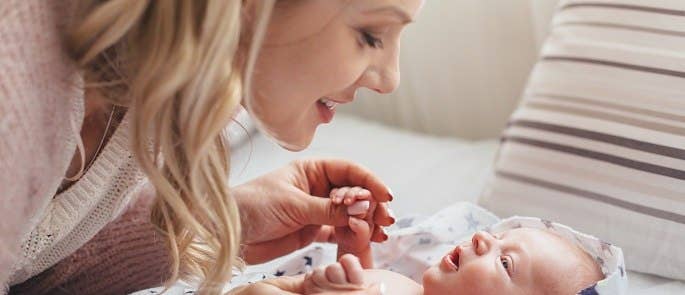
Set routines
Newborn babies benefit from consistency – try to feed them and put them down to sleep at similar times each day.
At the Infant Stage (3-12 Months)
Give them opportunities for physical development
Giving infants enough time out of their cot or bouncer allows them to move around and explore, further developing their muscles. Even helping them to sit up is extremely beneficial in increasing their balance. As an extra step, you can bounce them on your knee when you do this.
Encourage the infant to reach for objects by putting their toys slightly further away than you normally would. When they reach 9-12 months, you could help them learn to walk by holding their hands as they try, or giving them a toy trolley to push along. It’s also a good idea to frequently give them a piece of paper and some chalk to make marks – this is the beginning of learning to write, and takes a lot of practice!
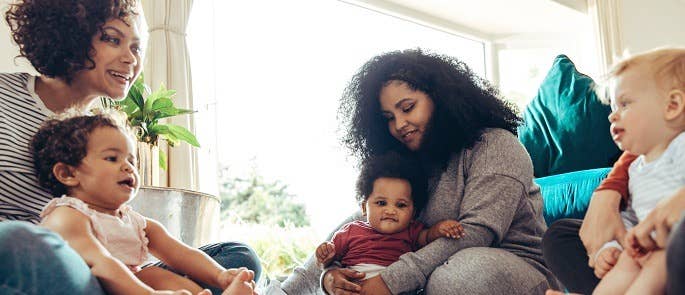
Develop their listening skills
You can do this by making different sounds, using toys with bells or different sound effects, and playing different types of music. Watch how the baby reacts, and reward them with a smile and a hug.
Talking to the baby is also really beneficial here – even though they can’t yet answer you, it develops their listening and teaches them turn-taking and the rhythms of language. Use a high-pitched, singsong voice to catch their attention, play with sounds (e.g. using rhymes or reduplications like ‘tum-tum’) and use simple sentences – research has shown that infants prefer being talked to in this way than being talked to in regular ‘adult’ English (Fernald, 1985).
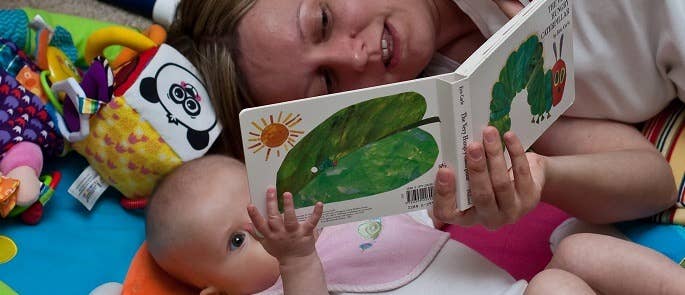
If you’re finding it difficult to think of things to say, describe your actions as you dress, feed, and bathe the child, or read them big, colourful books, talking to them about what is happening in the pictures. Use facial expressions and gestures to help them understand – remember, they don’t yet speak your language! You can also teach them vocabulary by explicitly connecting words to objects and people for them; for example, ask ‘where is your cup?’ and then say ‘here is the cup’, showing them the object.
Did You Know?
At this age, TV will not teach them to speak, even ‘educational’ programmes – research has shown that infants don’t tune in to speech that comes from a machine, and just hear it as noise (Kuhl, 2007). They only tune in to and understand speech coming from a human who is physically with them.
Model things that you want them to learn
For example, show them how to clap or turn the pages of books, or pass objects from one hand to the other when they are watching. You’ll find that they eventually copy you.
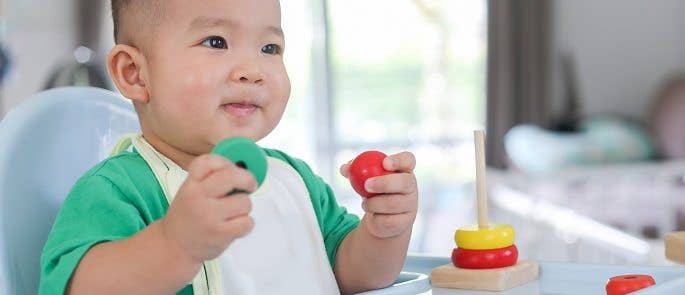
Give them lots of opportunities to play
In the early years, playing is the main way that children learn and develop. Give them toys that they can play with on their own, so that they can explore and experiment – rattles are great early toys, but you can even make a toy out of a crinkly blanket for them to kick off their legs.
As their dexterity improves, let them build towers or stack rings to improve their hand-eye coordination. It is also important to play with them sometimes; doing so shows the child that they are important to you, and helps build your relationship. When they are a young infant, blowing raspberries can be a good game, and for 6-9 month-olds, games like Peek-a-Boo can improve their memory and concentration.
Reward and reassure
Remember that even squeezing a squeaky toy or shaking a rattle takes a lot of effort for a baby – reward them with praise (both words and cuddles). When they are unsure about something, such as being around strangers, reassure them by being relaxed and talking to the stranger in front of them. It’s important for babies to feel safe and secure, and have enough reassurance.
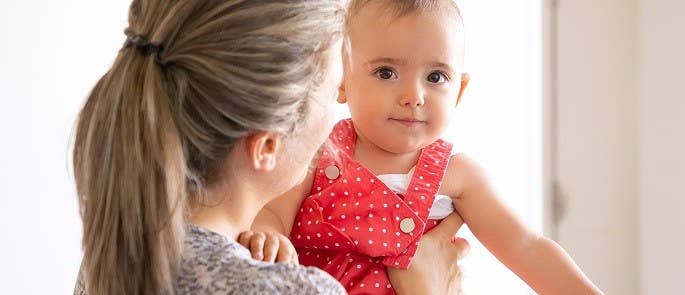
Encourage cognitive development
If they continually drop objects, keep picking them up – they are learning about cause and effect! Encourage them spending lots of time on a task, which helps to build their concentration – this will help them in the future.
At the Toddler Stage (1-3 Years)
Continue having predictable routines
Routines make your child feel secure – have a set bedtime and time that you get up in the morning, as well as mealtimes. It also helps to carry out your morning tasks in the same order; for example, getting up, getting dressed, having breakfast, and brushing your teeth. It is good for them to include tidying away their toys as part of their routine – tidying can help with mathematical ordering skills. You could present this as a challenge, such as ‘I bet you can’t tidy away all your toys in 1 minute’.
Read to them every night
Reading to your child – and talking about the book with them as you go along – is one of the best ways to teach vocabulary. It also helps them to connect sounds to written words (which supports learning to read and write), enhances their creativity, and improves their cognitive development and literacy, leading to greater achievement in school later on. See our dedicated Hub article about reading to children for more information.
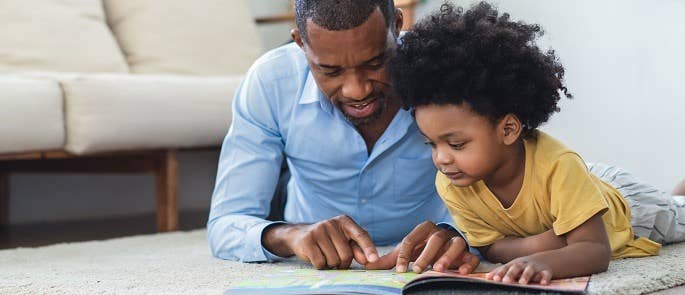
Limit TV time
At this stage, children might start to watch TV. A maximum of half an hour or an hour per day is fine, but even during this time, it’s most helpful if you sit with your toddler and talk about what you’re watching. This gives them an opportunity to develop their language, since research has shown that children cannot learn language effectively from watching television alone (O’Doherty et al., 2011). In fact, the more hours children spend watching television, the less they will develop their language skills, because they are spending less time interacting with people (Zimmerman, Christakis & Meltzoff, 2007).
Children do find electronic display screens extremely attractive, and it is easy for them to become engrossed in them – just take care not to give them this opportunity too often.
Respond to their emotions with calmness
Toddlers are at the stage where they may become overwhelmed with emotion and have tantrums, but remember that you are a model for their behaviour – don’t lose control in response. Instead, reassure them, tell them you understand how they’re feeling, and when they have calmed down, try to talk about why they felt that way. You could use this a learning opportunity for the future; for example, if they became upset about having to share a toy with another child, explain why we sometimes have to share, and praise future good behaviour. Children benefit from these sorts of clear explanations about what to do and what not to do. Additionally, helping them to solve their problems supports their cognitive development.
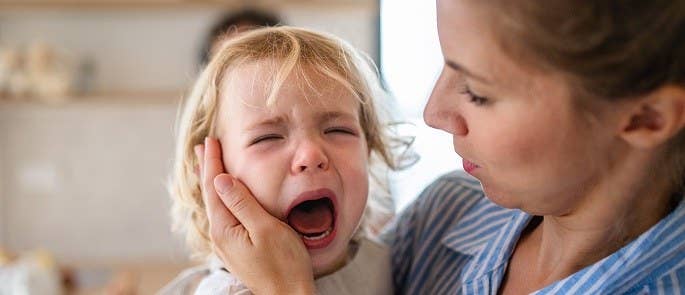
Let them have some independence
Be patient with them dressing and undressing themselves, even if it takes a long time, buy clothes that are easy to fasten, and let them choose what they want to wear each day. Don’t direct them when they are playing, but provide them with props (for example, an old phone so that they can pretend to phone you, or a pretend ‘shop’, or dressing up clothes). You can join in if they ask you to! Other ideas include giving them their own little bag to carry something in when you go shopping, or letting them help get lunch ready and share out portions – both of which also help with their physical development.
At the Preschool-Age Stage (3-4 years)
Let them openly express all their feelings
While children might cry when it seems unnecessary, they need to feel safe, secure, and reassured by you. Never shame them or tell them to be brave or not to cry – just provide support. This includes times when they are scared that there are monsters under the bed; children are very imaginative at this age, and need to be told that monsters don’t exist!
Help them become more social
Practise understanding social rules at home (for example, having conversations without interrupting) – stay relaxed and praise them for doing well. When they do make friends, show how pleased you are, and ask questions about their friends. Encourage them joining in with small group games.
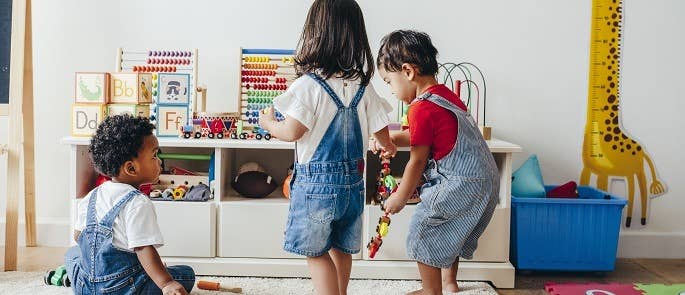
Keep encouraging development in every domain
Continue to read to them daily – you could also help them to re-tell stories using props to improve their memory. Encourage mark-making on pieces of paper, and help them to sort objects into categories (for example, shape) for their cognitive development. You could also play memory games; talking about what you did last week is a good test of their memory, as well as asking them questions such as ‘what do I need to cut an apple with?’ or ‘what do I pour your milk into?’.
Give them simple chores to do
This boosts children’s self-confidence, even if the task is relatively small, such as pairing socks. When asking them to do chores or tidying, make sure you give them simple instructions, such as ‘put your shoes in the basket’.
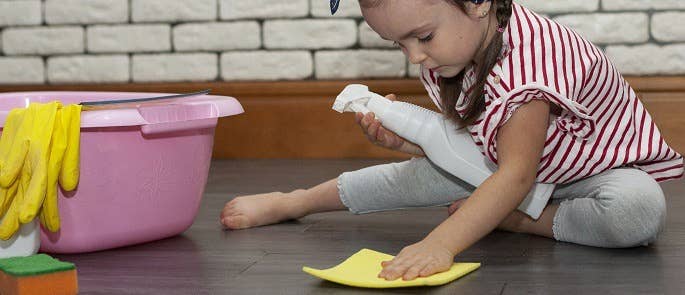
Help them to understand the wider world
Taking them out for walks, to the library, or to look at the fire station or police station teaches them more about life going on around them. This enhances their cognitive development.
At the School-Age Stage (4-5 Years)
Provide learning materials, but don’t pressurise
Give them books to look at, paper to make marks on with lots of interesting materials, and point out words on labels, TV, or books. However, try not to pressurise them into learning to read and write until they are ready to.
Be active together
Now that they can move around more, do physical exercise together – go swimming, play football, dance, or go to the park.

Remain relaxed when talking about going to school
Explain what happens at school and when they’ll go, but ensure that children think of it as a positive experience.
Enhance their understanding of language
You could play rhyming games, asking them which words rhyme with ‘cat’. Ask them to come up with words that begin with the same letter to boost their awareness of letters. Play ‘I spy’ and other games that will increase their vocabulary, or when you’re sharing a story together, ask them why they think something has happened or what might happen next.
Continue to play
Since play is the main way that children learn and develop during their early years, it is important for them to have plenty of opportunities to do so, even when they are at school. Teachers should try to incorporate as much play and active learning as they can, in order to make learning effective.
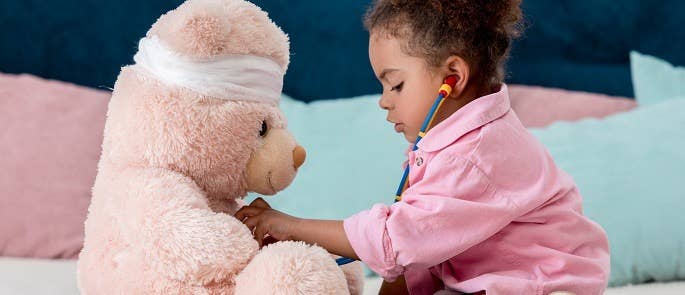
Remember that children behave differently at school or playgroup than they do at home
Teachers and childcare workers should talk to children’s families first about any developmental concerns they have, because the family might confirm that the child has actually met their developmental milestones at home. They simply may not feel comfortable enough at school to show this.
Overall, strong parent-child bonds, good nutrition, adequate sleep, routines, and a safe, nurturing environment will help to ensure that children develop as they should.
The first five years of a child’s life are critical for their futures. It is important to ensure that you understand and pro-actively encourage their development during this time, in order to meet their needs. You can use the child development checklist and the tips for supporting development to help you to do this, as well as adding to them with your own ideas.
Further Resources
- How to Support Children With Speech, Language, and Communication Needs
- Supporting Speech & Language Development In Early Years Course
- Supporting Language Development in the Early Years
- Why is Reading so Important for Children?
- Education Training Courses
- Keeping Children Safe in Education: Key Changes
- Promoting Social Development in Children Through Structured Group Play
- Curiosity Approach in Early Years: Importance and Ideas
- How to Encourage Children to Express Feelings & Emotions
- Reception Baseline Assessment: Guidance for Teachers & Parents
- Child Development Quiz
- Benefits of Role Play in Early Years: Advice for Teachers


